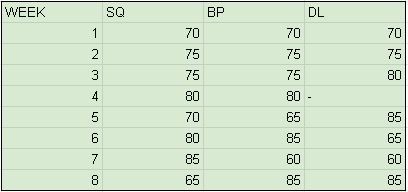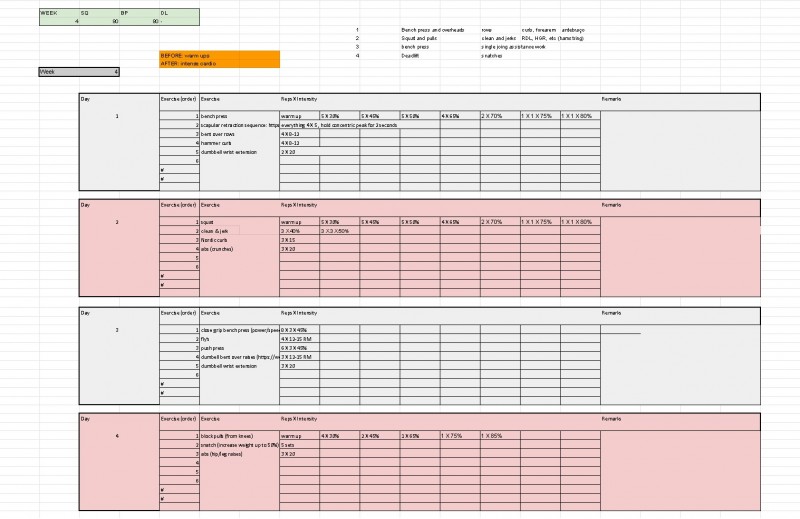
After the three months of overtraining syndrome (OTS) recovery, which you can read about here, here and here, Sean was ready for a challenge. His powerlifting numbers were pretty high and he qualified as “elite international” in one of the sports many sanctioning bodies that had a world championship on a convenient date. The championship was in November and we started the new strategy in June. Five months and change to prepare.
What I usually do with elite athletes who have a competitive goal beyond 3 months ahead and nothing in between is hold them back on the full-range-of-movement intensity to avoid peaking ahead of time. So here were the intensity goals for the first eight weeks (to learn my approach to intensity, go to the second article on this series). Later on, during this first mesocycle (or whatever you want to call it) I use supra-maximal work on partials (very short range-of-motion).
Below is the 4th week in this strategy. He still had his “intense cardio” and the pre-activation sequences prescribed during the recovery period.
The chief concern – and I believe it is any coach’s chief concern – was to keep Sean healthy.
The program is minimalist: it’s part of a competitive cycle. For an athlete skilled enough to perform the Olympic weight lifts properly, I usually keep them. Up to now, all I have seen is that they provide benefit to other sports preparation. If the athlete is not skilled, then obviously not: it doesn’t make sense to keep a part of the athlete’s routine focused on skill learning for something he won’t use competitively. I do keep some partials such as the snatch high pulls and clean high pulls. More about this later.
CLICK ON THE IMAGE TO ENLARGE IT











